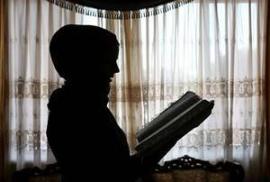(Ahlul Bayt News Agency) Admiring the way Islam treats women; Julia Moukhallalati, a Sydney young woman, challenged her parent’s Orthodox Christian upbringing to convert to Islam.
"My parents pushed me to be Orthodox but they never had answers to my questions," Moukhallalati, 22, told Australia’s The Sunday Telegraph, on January 19.
The young woman, who converted to Islam four years ago when she was only 18, asserted that she has always been fascinated with Islam and the way it puts women on a pedestal.
“As soon as I started studying it I knew I had to be a part of it," she said.
"I loved how a woman was treated. She is treated like a rare diamond, she is honored in the family."
According to the Australian New Muslim Association, Moukhallalati is one of almost one hundred people who convert to Islam in Sydney each year.
Australian Muslim Women's Association head Silma Ihram herself converted to Islam during a trip to Indonesia in 1976 at 24.
The association estimates two-thirds of the converts they see each year are female, with more than 60 per cent converting because of their husbands or partners.
This was not the case for Moukhallalati who found Islam before meeting her Lebanese-Australian husband Raed.
Seeing him for the first time while asking about halal meat in a restaurant, they married just three months later.
Muslims, who have been in Australia for more than 200 years, make up 1.7 percent of its 20-million population.
Islam is the country's second largest religion after Christianity.
True Islam
Defending her new faith, Moukhallalati believes it was her duty to spread the true word of Islam by correcting misconceptions long associated with it.
"It's pretty sad. There are some Muslims who are extreme, but I believe in moderation," she said.
"It's the best thing I have done, but make sure they (converts) go to the right source. A lot of information on the internet could not really be what Islam teaches.
"You want to learn the truth as Islam is, not how some people portray it to be."
Moukhallalati added that she loves her Islamic headscarf, or hijab, giving her more pride and beauty.
“I put in more pride and effort with the scarf on,” she said.
“Now that I'm scarfed I feel more beautiful.”
Islam sees hijab as an obligatory code of dress, not a religious symbol displaying one's affiliations.
/149
"My parents pushed me to be Orthodox but they never had answers to my questions," Moukhallalati, 22, told Australia’s The Sunday Telegraph, on January 19.
The young woman, who converted to Islam four years ago when she was only 18, asserted that she has always been fascinated with Islam and the way it puts women on a pedestal.
“As soon as I started studying it I knew I had to be a part of it," she said.
"I loved how a woman was treated. She is treated like a rare diamond, she is honored in the family."
According to the Australian New Muslim Association, Moukhallalati is one of almost one hundred people who convert to Islam in Sydney each year.
Australian Muslim Women's Association head Silma Ihram herself converted to Islam during a trip to Indonesia in 1976 at 24.
The association estimates two-thirds of the converts they see each year are female, with more than 60 per cent converting because of their husbands or partners.
This was not the case for Moukhallalati who found Islam before meeting her Lebanese-Australian husband Raed.
Seeing him for the first time while asking about halal meat in a restaurant, they married just three months later.
Muslims, who have been in Australia for more than 200 years, make up 1.7 percent of its 20-million population.
Islam is the country's second largest religion after Christianity.
True Islam
Defending her new faith, Moukhallalati believes it was her duty to spread the true word of Islam by correcting misconceptions long associated with it.
"It's pretty sad. There are some Muslims who are extreme, but I believe in moderation," she said.
"It's the best thing I have done, but make sure they (converts) go to the right source. A lot of information on the internet could not really be what Islam teaches.
"You want to learn the truth as Islam is, not how some people portray it to be."
Moukhallalati added that she loves her Islamic headscarf, or hijab, giving her more pride and beauty.
“I put in more pride and effort with the scarf on,” she said.
“Now that I'm scarfed I feel more beautiful.”
Islam sees hijab as an obligatory code of dress, not a religious symbol displaying one's affiliations.
/149

